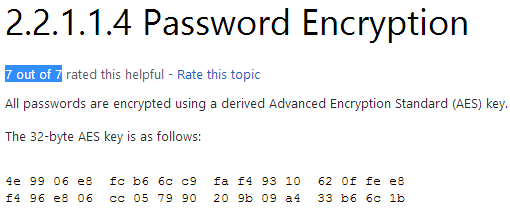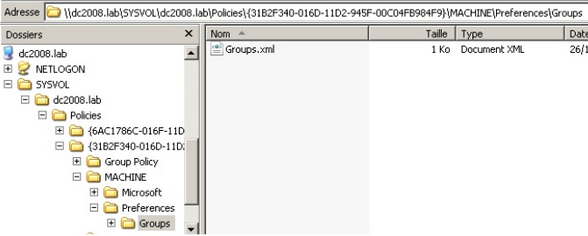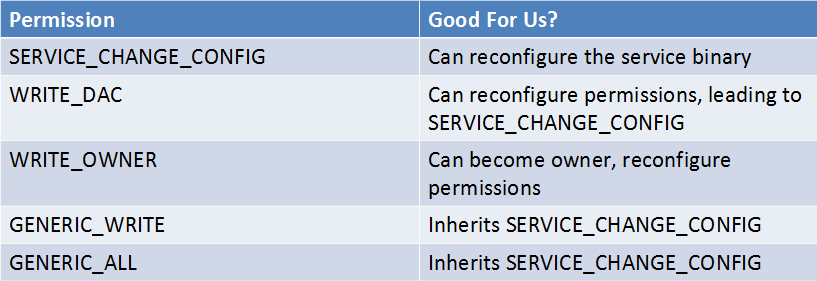# This will display verbose output for all scheduled tasks, below you can see sample output for a
single task.
C:\Windows\system32> schtasks /query /fo LIST /v
Folder: \Microsoft\Windows Defender
HostName: B33F
TaskName: \Microsoft\Windows Defender\MP Scheduled Scan
Next Run Time: 1/22/2014 5:11:13 AM
Status: Ready
Logon Mode: Interactive/Background
Last Run Time: N/A
Last Result: 1
Author: N/A
Task To Run: c:\program files\windows defender\MpCmdRun.exe Scan -ScheduleJob
-WinTask -RestrictPrivilegesScan
Start In: N/A
Comment: Scheduled Scan
Scheduled Task State: Enabled
Idle Time: Only Start If Idle for 1 minutes, If Not Idle Retry For 240 minutes
Power Management: No Start On Batteries
Run As User: SYSTEM
Delete Task If Not Rescheduled: Enabled
Stop Task If Runs X Hours and X Mins: 72:00:00
Schedule: Scheduling data is not available in this format.
Schedule Type: Daily
Start Time: 5:11:13 AM
Start Date: 1/1/2000
End Date: 1/1/2100
Days: Every 1 day(s)
Months: N/A
Repeat: Every: Disabled
Repeat: Until: Time: Disabled
Repeat: Until: Duration: Disabled
Repeat: Stop If Still Running: Disabled
[..Snip..]
# The following command links running processes to started services.
C:\Windows\system32> tasklist /SVC
Image Name PID Services
========================= ======== ============================================
System Idle Process 0 N/A
System 4 N/A
smss.exe 244 N/A
csrss.exe 332 N/A
csrss.exe 372 N/A
wininit.exe 380 N/A
winlogon.exe 428 N/A
services.exe 476 N/A
lsass.exe 484 SamSs
lsm.exe 496 N/A
svchost.exe 588 DcomLaunch, PlugPlay, Power
svchost.exe 668 RpcEptMapper, RpcSs
svchost.exe 760 Audiosrv, Dhcp, eventlog,
HomeGroupProvider, lmhosts, wscsvc
svchost.exe 800 AudioEndpointBuilder, CscService, Netman,
SysMain, TrkWks, UxSms, WdiSystemHost,
wudfsvc
svchost.exe 836 AeLookupSvc, BITS, gpsvc, iphlpsvc,
LanmanServer, MMCSS, ProfSvc, Schedule,
seclogon, SENS, ShellHWDetection, Themes,
Winmgmt, wuauserv
audiodg.exe 916 N/A
svchost.exe 992 EventSystem, fdPHost, netprofm, nsi,
WdiServiceHost, WinHttpAutoProxySvc
svchost.exe 1104 CryptSvc, Dnscache, LanmanWorkstation,
NlaSvc
spoolsv.exe 1244 Spooler
svchost.exe 1272 BFE, DPS, MpsSvc
mDNSResponder.exe 1400 Bonjour Service
taskhost.exe 1504 N/A
taskeng.exe 1556 N/A
vmtoolsd.exe 1580 VMTools
dwm.exe 1660 N/A
explorer.exe 1668 N/A
vmware-usbarbitrator.exe 1768 VMUSBArbService
TPAutoConnSvc.exe 1712 TPAutoConnSvc
[..Snip..]
C:\Windows\system32> net start
These Windows services are started:
Application Experience
Application Information
Background Intelligent Transfer Service
Base Filtering Engine
Bluetooth Support Service
Bonjour Service
COM+ Event System
COM+ System Application
Cryptographic Services
DCOM Server Process Launcher
Desktop Window Manager Session Manager
DHCP Client
Diagnostic Policy Service
Diagnostic Service Host
Diagnostic System Host
Distributed Link Tracking Client
Distributed Transaction Coordinator
DNS Client
Function Discovery Provider Host
Function Discovery Resource Publication
Group Policy Client
[..Snip..]
# This can be useful sometimes as some 3rd party drivers, even by reputable companies, contain more holes
than Swiss cheese. This is only possible because ring0 exploitation lies outside most peoples expertise.
C:\Windows\system32> DRIVERQUERY
Module Name Display Name Driver Type Link Date
============ ====================== ============= ======================
1394ohci 1394 OHCI Compliant Ho Kernel 11/20/2010 6:01:11 PM
ACPI Microsoft ACPI Driver Kernel 11/20/2010 4:37:52 PM
AcpiPmi ACPI Power Meter Drive Kernel 11/20/2010 4:47:55 PM
adp94xx adp94xx Kernel 12/6/2008 7:59:55 AM
adpahci adpahci Kernel 5/2/2007 1:29:26 AM
adpu320 adpu320 Kernel 2/28/2007 8:03:08 AM
AFD Ancillary Function Dri Kernel 11/20/2010 4:40:00 PM
agp440 Intel AGP Bus Filter Kernel 7/14/2009 7:25:36 AM
aic78xx aic78xx Kernel 4/12/2006 8:20:11 AM
aliide aliide Kernel 7/14/2009 7:11:17 AM
amdagp AMD AGP Bus Filter Dri Kernel 7/14/2009 7:25:36 AM
amdide amdide Kernel 7/14/2009 7:11:19 AM
AmdK8 AMD K8 Processor Drive Kernel 7/14/2009 7:11:03 AM
AmdPPM AMD Processor Driver Kernel 7/14/2009 7:11:03 AM
amdsata amdsata Kernel 3/19/2010 9:08:27 AM
amdsbs amdsbs Kernel 3/21/2009 2:35:26 AM
amdxata amdxata Kernel 3/20/2010 12:19:01 AM
AppID AppID Driver Kernel 11/20/2010 5:29:48 PM
arc arc Kernel 5/25/2007 5:31:06 AM
[..Snip..]



